► Tamiya BT-01 911 RSR built and driven
► Chassis can be built FF, FR or MR
► You’ll need your own radio, battery and charger
Stunning, isn’t it? Tamiya has a reputation for detailed bodyshells, but its Porsche 911 2.8 RSR is a near perfect 1/10th recreation of the 1970s original. Even better, there’s a new chassis underneath that can be built up as front motor and front-wheel drive, front motor and rear-wheel drive or mid motor and rear-wheel drive.
We’ve already seen this BT-01 chassis under a Mk4 Toyota Supra shell with the FR configuration, with this 911 switching to MR. It’s a more expensive and more complex kit than the popular four-wheel drive TT-02 but comes with adjustable toe-in and detailed two-piece wheels as standard.
This helps explain away some of the cost increase, yet this is still a classic Tamiya chassis. That means friction rather than oil-filled shocks, no bearings and a long list of available hop up options. A standard silver can motor is included along with an electronic speed controller, 1.5mm allen key and a box wrench for nuts and bolts.
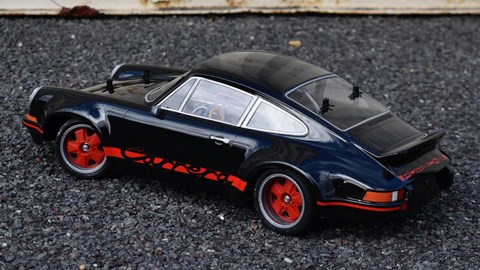
You’ll need a crosshead screwdriver, side cutters, a craft knife, transmitter and receiver, a servo, battery and charger to make it all work. The shell requires a single can of spray paint, with all the details including the Carrera script on a sheet of stickers.
A long-time Tamiya collector, keen RCer and experienced road tester, CAR magazine’s new cars editor Alan Taylor-Jones will be testing the Tamiya BT-01 Porsche 911 2.8 RSR. Keep reading to see what he thinks of the build process and driving experience.
Tamiya BT-01 Porsche 911 RSR 2.8
Pros
- Stunning shell and wheel combo
- Some suspension adjustability out of the box
- You get all the bits to make it FF, FR or MR
Cons
- Suspension and steering exceptionally sloppy
- Frustrating to drive
Features
- Motor and speed controller included
- Radio, battery, charger and paint required
- Three chassis configurations
- Upgrades readily available
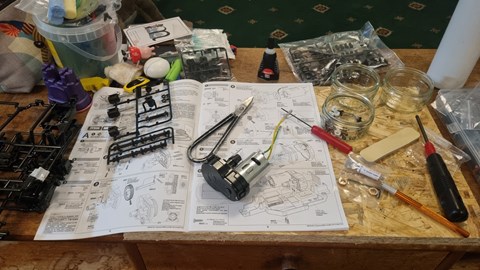
The build
Tamiya produce some of the best manuals in the business, and the BT-01 is no exception. To help further, plastic parts are clearly numbered on lettered sprues, hardware is in lettered bags, and all the stickers are numbered in a specific order. A bit of prep goes a long way. Read the manual before you start, get a few trays for the different hardware bags and charge the battery.
The kit comes with a four-way wrench for nuts and bolts and 1.5mm allen key, but you’ll need a crosshead screwdriver (a standard Ikea one works pretty well), pliers, a craft knife and scissors. I’d recommend a Tamiya screwdriver set for the best purchase on the heads – it makes the build and maintenance so much easier.
Plastic parts come on a sprue where a number of components are on one mould. I use side cutters to snip them off as cleanly as I can, then use the knife to trim away any excess. Remove only the parts you need so you can still see what number the other components are.
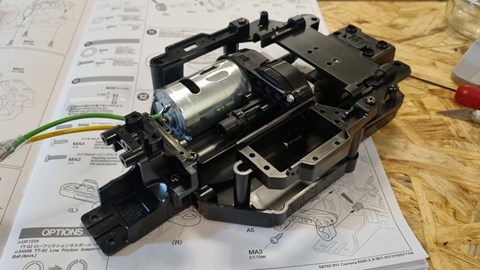
Hardware is shown lifesize on the left margin of the manual for double checking and it’ll tell you where to grease and glue. As with all my radio-controlled cars, I’ve fitted a set of metal ball bearings instead of the solid metal and plastic bushes. The bearings allow the axles, gears and steering mechanism to run smoother, improving performance, durability and runtimes.
The build itself was a bit frustrating, though. It feels like there’s a lot of unnecessarily small and fiddly bits to screw together to make larger pieces, and there’s so much slop in the suspension and steering, I thought I’d put it together wrong initially.
If you’re looking at touring cars, a Tamiya TT-02 is far easier and quicker to build and feels less sloppy. Ultimately, to make the BT-01 chassis so versatile with regards to motor position and drive, compromises have been made that add complexity to the design and build process.
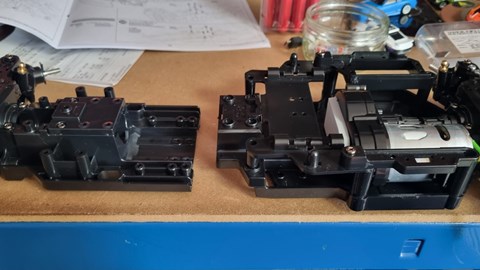
Unlike some of Tamiya’s shells, the 911 doesn’t come pre-drilled or cut. Thankfully there are moulded in dimples so you can see where to drill, and the manual tells you how big the holes need to be. I prefer to use a body reamer with a mm scale on the side for the holes, then a combination of straight and curved Lexan scissors for the shell.
I chose black paint as an alternative to box art white, and that’s the only tin of spray you’ll need. The manual calls for the door mirror to be painted, although I have left it in silver moulded plastic to match the wheels and avoid really noticeable scuffs when it rolls over.
By Tamiya standards there aren’t many stickers, although it’s still a few hours of carefully lining up the window surrounds, multi-piece lights and stripes. The two-piece wheels also require a few screws each after you’ve carefully put the pieces together in the right orientation.
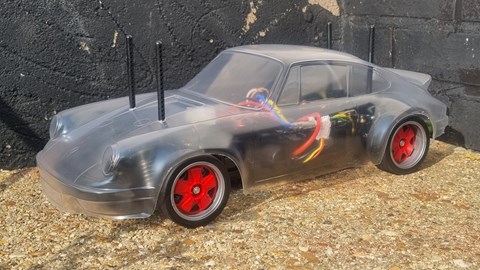
All done it looks simply fantastic, quickly replacing my TT-02 A90 Toyota Supra on the shelf. It’s really well-proportioned and has impressive levels of detail. Unfortunately, it doesn’t go as well as it looks…
The drive
Let’s start with the good. Despite being rear-wheel drive, the wide rear tyres and open differential mean it’s not too spin-happy in the bends. If the RSR is moving at a reasonable pace, it’s the front tyres that always want to let go first. You really need to provoke it in tight corners to get the back to step out.
That’s great news for beginners and means you won’t need to consider a gyro like the drift brigade. Naturally you can tune the handling balance with the included spring spacers and toe-in adjustment front and rear, and there’s loads of hop ups available including limited-slip differentials and oil-filled shocks with a range of springs and oils.
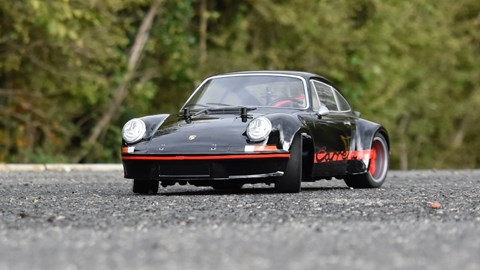
However, even once the RSR has been carefully trimmed to drive in a straight line, it’ll sometimes veer off on its own. I can only assume that’s down to the vast amounts of play in the steering system and toe links front and rear. Looking through the cornering shots tells quite the story, with the rear wheels clearly turning a not inconsiderable amount during hard acceleration (see above).
It’s also possible to see the chassis flexing if you haven’t dialled back the steering angle (should your radio allow), the servo pushing the front chassis section away from the main monocoque. With bouncy friction shocks as standard as well, it’s a frustrating drive and there’s seemingly no way to dial out enough slop, even with shims and uprated ball joints.
A basic silver can motor means it’s reasonably nippy on a 7.2v NiMh pack, with a 7.4v LiPo bringing significantly more punch. The standard ESC will take a much hotter motor than this, but that’d only exacerbate the handling woes.
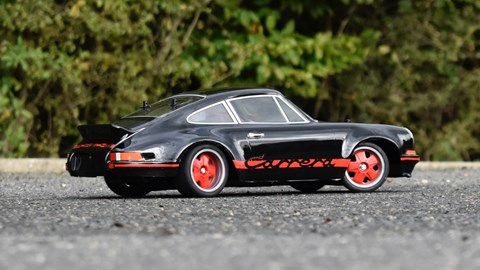
Durability
Like most Tamiyas, the BT-01 is primarily constructed of tough but flexible plastic. This is great for beginners as the car can take a good few hits before you’re likely to break something. There’s also no chance of bending a chassis in an impact.
If you do manage to snap something, parts are readily available and not too expensive. That said, most major parts aren’t available as a single item, instead you buy the entire parts tree as it comes in the kit. It’s handy for having spare suspension arms and the like, but you do end up with plenty of items you’re unlikely to break.
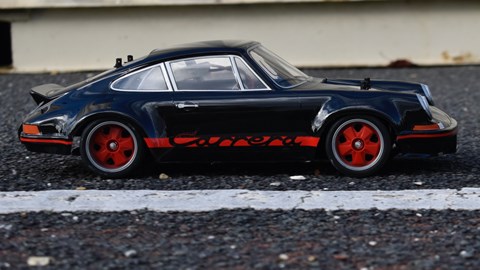
Other things to look out for are the aluminium pinion which wears over time (look for teeth resembling saw blades). A steel replacement is cheap and will prevent this happening. Build without bearings and you’ll also find the axles and shafts will get wobbly over time as the plastic and brass bushes wear.
Any downsides?
It’s a jack of all trades and master of none. I can’t imagine the other driveline layouts will feel any tighter to drive. Yes, you get some nice turnbuckles and all the parts you need for FF, FR and MR layouts, and the chassis is undoubtedly more complex than the TT-02’s simple bathtub yet handles much worse with far less accurate steering.
Price and competition
As you’ve already heard from the intro, two-wheel drive doesn’t make the BT-01 cheap. The complexity of its chassis, spare parts for the different layouts, and use of turnbuckles for the toe links adds up to make it around £60 more than a Tamiya TT-02 with the same shell.
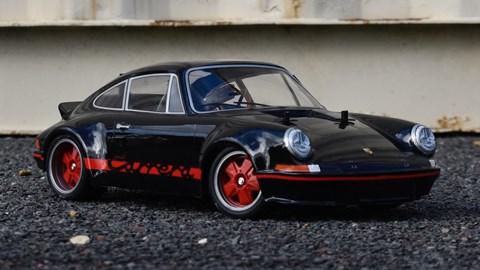
But what if you specifically don’t want four-wheel drive? Well, there are plenty of drift kits from the likes of MST that offer a far more precise platform albeit with going sideways in mind, and they even make a chassis that can be configured as FF, MR or rear motor, albeit in a smaller size.
In both cases you’ll pay less for a better specified kit, although you won’t get the same quality of bodyshell or instruction manual.
Verdict
Tamiya has a long history of doing things its own way, creating some iconic models in the process. The BT-01 is sadly not one of those cars. I appreciate the ingenuity and flexibility of the chassis, but it’s just too flawed to recommend, even if it were cheaper than a TT-02.
However, the sloppy steering and suspension make it hard to drive in a straight line, and it makes for imprecise cornering, too. Hop ups are available that help, although none that I’ve seen online seem to totally cure the BT-01’s loose nature.
If your taken by the shell, just buy a far cheaper TT-02, and if you want a 2WD chassis, just buy something else. Until Tamiya revises the chassis and fixes some of its flaws, this is a kit to avoid. Bring on the BT-02 already.
2/5
Ratings:
Driving: 2.0
Building/maintaining: 3.0
Value for money: 2.0
Overall: 2.0
Specifications:
Size: 1/10th, length 457mm, width 204mm, height 138mm
Weight: 1163g (no battery)
Chassis material: Plastic
Power: 7.2v NiMh or 7.4v LiPo
Motor type: 540 brushed, 27T
Driven wheels: Two, gear drive
Top speed: 15-20mph
More items to consider:
Tamiya TT-02 Porsche 911 RSR
Same shell, much better chassis for less cash.
FTX Evo30
Far more performance for similar money.
Powerday D5S
A high-spec 2WD option.
Who tested the Tamiya BT-01 Porsche 911 RSR 2.8?
Alan Taylor-Jones is the new cars editor for CAR magazine, and also Parkers. He’s been writing about cars professionally since 2015 but has been obsessed with them since not long after birth. When he’s not sampling the latest and sometimes greatest cars, he’s got his hands full with a young family and menagerie of pets. Even so, he still finds the time to have a play with RC cars and Hot Wheels.
How the product was tested
We built the kit from scratch using Carson radio equipment and a 2100mah battery supplied by Tamiya UK. Once constructed, we drove it on a flat tarmac carpark. As the ESC is LiPo capable, we also took it for a blast on a suitable 2S pack to see what the performance difference was.